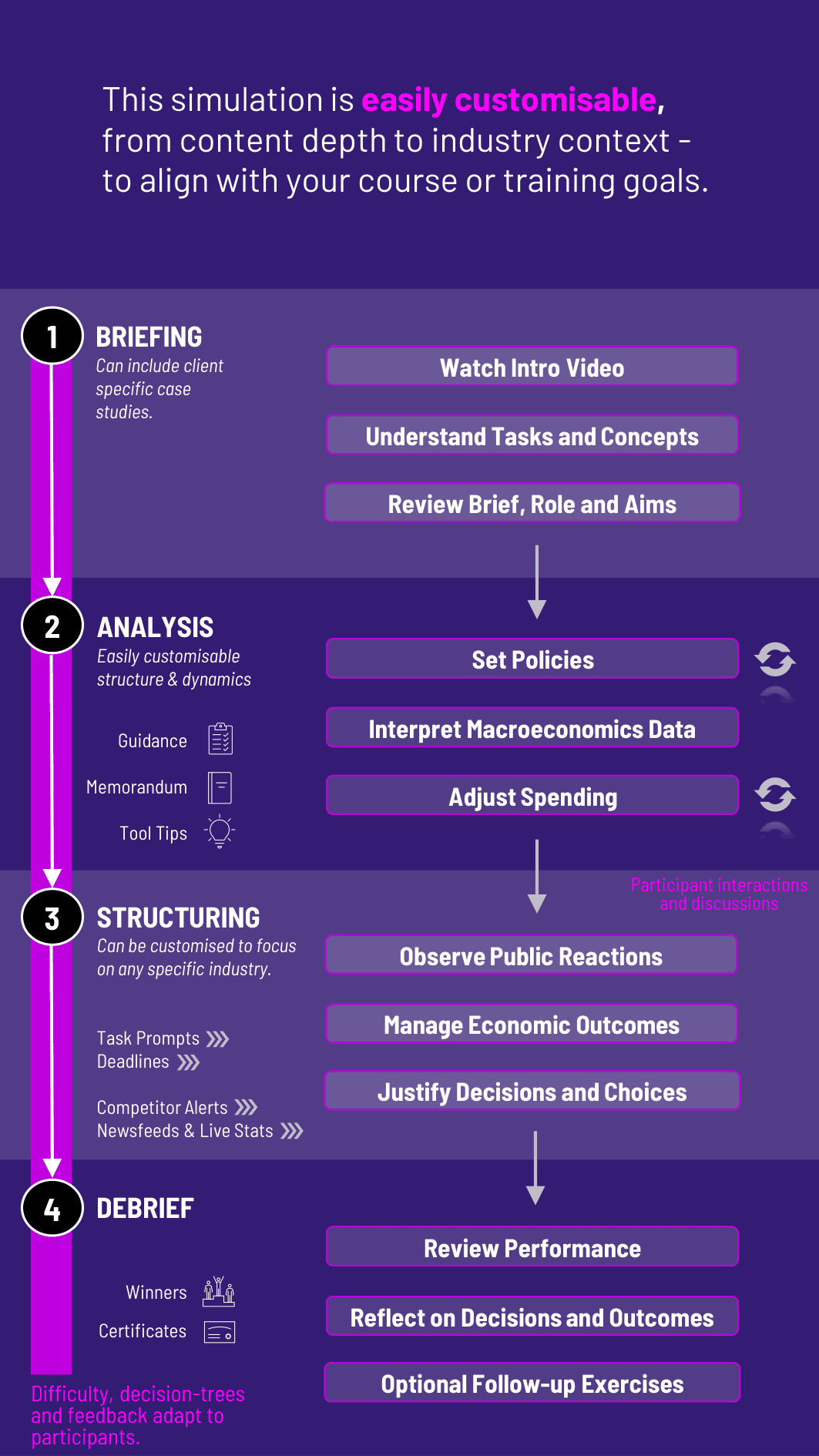
Students take charge of national economic policy - setting interest rates, adjusting government spending, and responding to economic shocks - in our immersive Macroeconomics Simulation.
Fiscal Policy: Government spending, taxation, and budget balance
Monetary Policy: Interest rate setting, inflation targeting, and money supply control
Business Cycles: Responding to booms, recessions, and stagflation
GDP Components: Consumption, investment, government spending, and net exports
Inflation and Unemployment: Phillips curve dynamics and policy trade-offs
International Trade: Exchange rates, trade balances, and global shocks
Policy Lags and Expectations: Dealing with time delays and forward-looking behavior


Interpret macroeconomic indicators and forecasts (e.g., GDP, inflation, unemployment)
Adjust interest rates or government spending to meet macro targets
Simulate real-time policy announcements and observe public and market reactions
Debate economic priorities in light of political or global constraints
Manage economic outcomes over multiple quarters or years
Justify their choices to peers, instructors, or simulated stakeholder panels
This simulation helps students move from passive theory to active decision-making in macroeconomics. They will learn to:
Apply macroeconomic models to real-world policy dilemmas
Analyze and synthesize large sets of economic data
Understand the trade-offs and unintended consequences of policy tools
Communicate complex economic decisions clearly and persuasively
Navigate the uncertainty, lags, and pressure that define public economic leadership
Reflect on the ethical and social impact of macroeconomic choices
Do students need prior macroeconomics knowledge? A basic foundation is helpful, but the simulation can be adapted to both introductory and advanced levels with guided briefings.
Can the simulation focus on specific themes (e.g., monetary vs fiscal policy)? Yes. Instructors can tailor the focus to fit learning goals - ranging from central bank independence to global trade dynamics.
How long does the simulation take? Typically 2–3 hours for a full macroeconomic cycle, though it can be shortened or extended across multiple class periods.
Is it more suited to individuals or teams? Both formats are effective. Team play adds collaborative complexity and mimics real-world policy committees.
How is student performance assessed? Through simulation scoring (based on inflation, unemployment, and growth), decision logs, economic rationales, and team presentations.
Join this 20-minute webinar, followed by a Q&A session, to immerse yourself in the simulation.
or
Book a 15-minute Zoom demo with one of our experts to explore how the simulation can benefit you.